Arley Hall & Gardens - Horticultural excellence
Many have sung the praises of Britain's most ancient herbaceous border. Greg Rhodes meets the team charged with keeping it, and the surrounding lavish gardens, the envy of gardeners and horticulturalists alike.
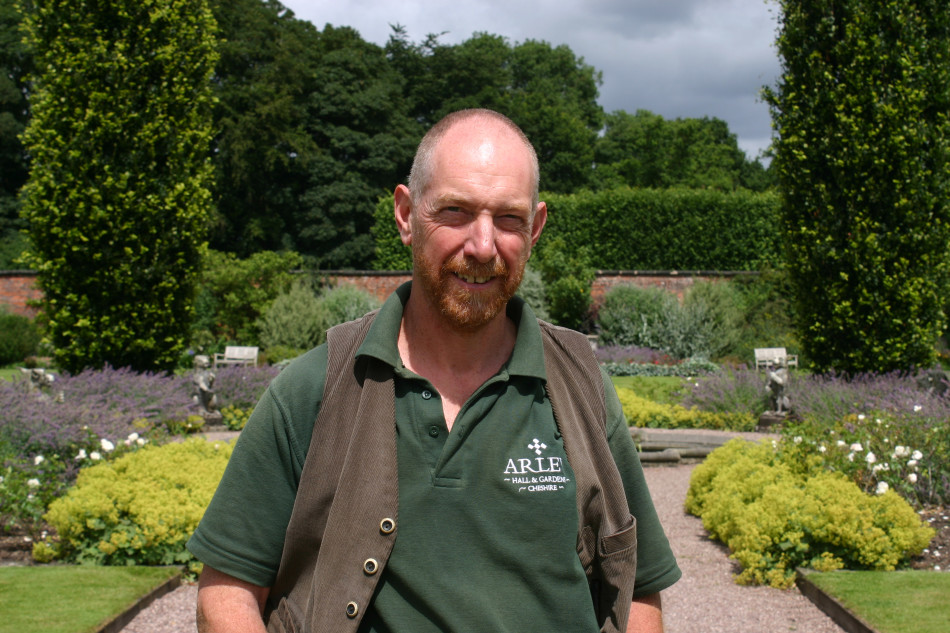
It's break time in the gardeners' brick-built shed at Arley Hall & Gardens. A chunk of sumptuous chocolate cake sits invitingly on the centre table - the bulk of it having fallen prey already to raids by the grounds team and volunteers clustered around contentedly.
After a warm welcome and an invitation to take tea and coffee, head gardener Gordon Baillie unveils his role in tending one of Britain's most treasured horticultural destinations - a Cheshire country estate steeped in heritage, boasting magnificent greenery, borders and living architecture and what, for many visitors, offers a true haven of peace.
The estate is one of Britain's jewels in the crown that prove so appealing for the media and it has hosted many a television and film crew over the years - BBC production Peaky Blinders, Coronation Street (the Chapel features in five weddings and at least four funerals) and Disney's Evermoor Chronicles for example - not forgetting Antiques Roadshow and The Real Housewives of Cheshire.
The ancestors of Viscount Ashbrook have lived at Arley Hall for over 500 years. The present Grade II listed Victorian pile stands on the site of the first house, built by the family in 1469, which nestles in the heart of the estate amid the stunning gardens and memorably landscaped park.
The present incumbent is the great great grandson of Rowland Egerton-Warburton, who built the present hall between 1832 and 1845, with its adjacent chapel on the site of the much earlier house, and lived there throughout his childhood.
The award-winning gardens exude an abundance of style and design, developed over 250 years by successive generations of the family, to now rank amongst the finest in the UK
The award-winning gardens exude an abundance of style and design, developed over 250 years by successive generations of the family, to now rank amongst the finest in the UK.
Outstanding features include the double herbaceous border, established in 1846 and said to be the earliest in the UK.
As Gordon chats, a robin rushes in to scrabble for seed scattered on the shed floor, closely followed by an unusually tame blackbird, also here for his 'elevenses'. "They're becoming tamer too," Gordon voices.
No one bats an eyelid, revealing that the birds are familiar visitors here, probably several times daily, highlighting the easy environment we've entered today.
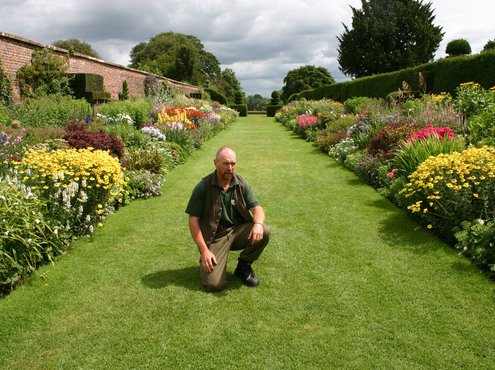
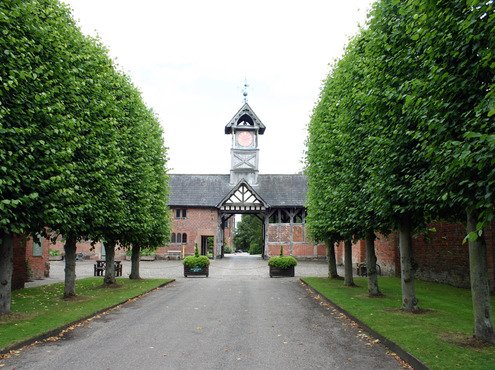
Arley Hall is a family venue to suit all ages. For garden lovers, the imposing avenue of fourteen Holm Oaks and elaborate topiary present signature structures.
The informal Grove and Sculpture Trail contain a riot of colour, whilst the two walled gardens, with deep borders, manicured lawns and an extensive collection of shrub roses are also a delight in season.
Scattered amongst the greenery is Arley Hall's eclectic collection of thirty sculptures, fashioned from wire, glass, wood, metal and stone.
The Gardener's Kitchen opened last year after extensive refurbishment and the appointment of new caterers delivering fresh, local and seasonal produce, where possible from the kitchen garden itself or local farmers, producers and suppliers.
Family fun in the Adventure Play Zone and Garden Trails, with zip wire, swings and slides, keep kids active and absorbed during their visit here.
We move outside into the stillness as Gordon tells us a little bit about himself. After graduating with honours in horticulture from the Scottish Agricultural College, Auchincruive, in 1987 (near Robbie Burns' house and famous for its 'hanging gardens' over the river Ayr), his first "cottage with job" followed after Lord Shawcross, lead British prosecutor at the Nurenberg War Crimes tribunal and a member of Clement Atlee's cabinet, gave him the head gardener's post on his East Sussex estate. "I badgered him into giving me the job as he thought I was overqualified for it," Gordon adds.
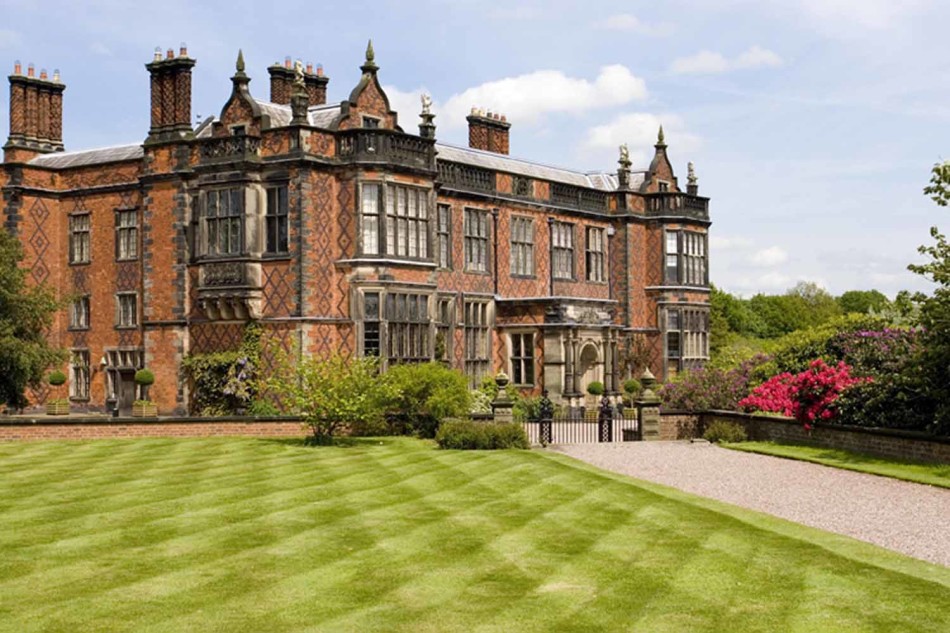
He moved on to work at specialist plant centre Stone Cross Nurseries in Pevensey, before spending four years at Knole Park National Trust estate in Kent. "I lived in a cottage in the middle of the nearby golf course," he recalls.
After moving west to take up the head gardener position at the Grade II listed Lake House gardens near Amesbury, Wiltshire, he landed the Arley Hall post nine years later in 2009.
His career path has taken him from a single-handed gardener to head honcho with one full-timer and two trainers to four full-timers at Lake, as at Arley Hall.
Spending my working time in a garden is what I most love. Earlier, I drew heavily on producing plants commercially but, in a garden, I could witness the lifecycle of annuals and perennials from start to finish
"Spending my working time in a garden is what I most love. Earlier, I drew heavily on producing plants commercially but, in a garden, I could witness the lifecycle of annuals and perennials from start to finish."
And he has plenty of those lifecycles to see up close and personal as 40,000 to 45,000 plants are growing during the season - mostly annuals and vegetables, the latter all for "internal consumption" in the café, restaurant and elsewhere.
Feeding the public's appetite for entertainment is always on his radar and we met him shortly after Arley Hall had run one of its family fun days.
"These keep me busy," he says. "Demonstrating seed-sowing and getting the kids involved is always popular but extremely time-consuming, when we can have up to 1,000 visitors on the day." He also leads three-hour tours on Tuesday afternoons for up to fifty visitors - no mean task in itself.
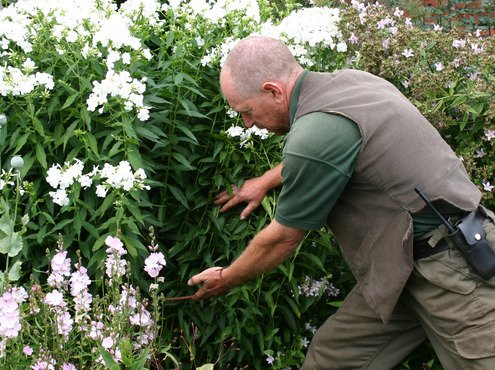
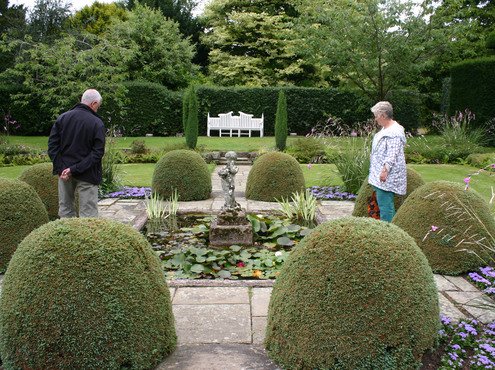
Gordon is engagingly self-effacing with a charm that will inspire many an inquiring mind - young or older - but he confesses to struggling with some of today's newer tools of the trade.
"I'm fighting a desperate rearguard action against technology," he notes. "I only have an iPad (my partner bought me it) and my phone. I've recently discovered Candy Crush, but for work I use Facebook, although I don't know half of what comes at me."
How about a five-year plan? "I barely have a five-minute one," he laughs. I suspect he's far more planned and organised than he lets on.
Helping Gordon keep on top of the 24-acre plot in his care is a retinue of twenty volunteers, and still growing. Bodies like the National Trust rely increasingly on the passion and energy of such helpers and, at Arley Hall, some of them have taken ownership of duties across the gardens. The other 1,200 acres of this patch of country is left in the hands of the Estate Manager.
We are a diverse site here and there's little we don't have, and I love the volunteers to learn and develop, even if they don't wish to become a gardener. We've supported an autistic young lad from school. He comes in one day a wee- on his own now - and does stuff like potting on, edging off and raking
"We are a diverse site here and there's little we don't have, and I love the volunteers to learn and develop, even if they don't wish to become a gardener. We've supported an autistic young lad from school. He comes in one day a wee- on his own now - and does stuff like potting on, edging off and raking."
The volunteers "rip through their various duties like a mob-handed fire brigade", Gordon adds.
"They want practical experience and we have the acreage to ensure they always have something to crack on with."
Before I have the chance to ask about the full-time team, Gordon clarifies that all are male. Why's that? "Women seem more reluctant to come on board, I'm unsure why," he says. "I've certainly tried and continue to do so."
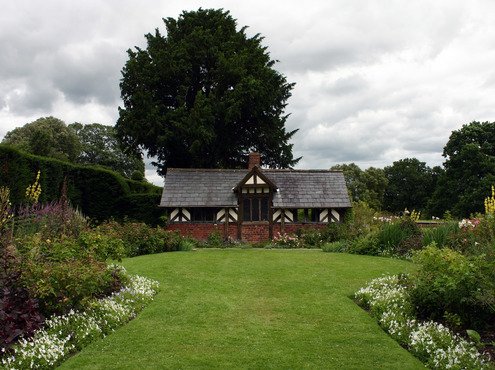
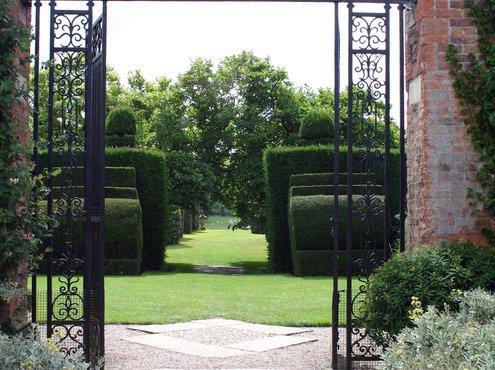
Estate duty gardener James Youd alternates with Gordon in locking the gates after a long day. His responsibilities include the walled garden and the shrub rose garden, with a little hedge-cutting mixed in. "We have a fine collection of roses, the brainchild of the late Viscountess Ashbrook," Gordon explains, adding: "I've developed a system of cross-training team members on each other's tasks so that, if someone is off sick or on holiday, one of the team can deputise to ensure the jobs are done. It seems to work pretty well." As does his style of `soft touch management`. "I wouldn't like to be micro-managed myself, so tend not to do so with the team."
Doug Rustadge, is tasked with most of the lawn mowing and there's plenty of it. Whilst ambling round, we pass into the imposing walled garden with its expansive lawns. Gordon seems a little laissez faire about lawn quality and maintenance but, on inspection, the grass bears all the hallmarks of well-manicured sportsturf.
Fellow team-member Mark, is cross-trained on it and has attained his climbing certificate, placing him in prime position for tree-pruning. Heavier weed control of brambles and docs in the meadow areas also comes under his remit.
Grass-cutting continues year-round now, whilst weeds spring up earlier in the year and stop growing later
"Grass-cutting continues year-round now," declares Gordon bemoaning climate change, "whilst weeds spring up earlier in the year and stop growing later."
Mark also trims the hedges - yews mainly -plus the distinctive pleached lime avenue at the entrance, planted by Viscount Ashbrook's ancestor Rowland and his wife Mary, the topiary finials and arguably the arborial pride of Arley Hall - the Quercus ilex Holm Oak evergreen avenue, planted in 1846 and contoured in the shape of towering cylinders - "the tin cans" as the team dubs them affectionately. "It's believed to be the only avenue of its kind," states Gordon. Another unique facet of this gorgeous rural retreat. The army of fruit trees - apple, pear, damsons, gages and cherries - all need regularly attending too.
Gordon himself lives on site - "a cottage comes with the job", 'for the better performance of your duties'," he quotes. It's about 1,000 yards from the gardens, far enough to walk back to lock the gates, he says, and I'm guessing, to give him sufficient 'commuting' distance after the rigours of the day.

We walk through an ornamental arched gateway and there's the glorious double herbaceous border I've heard so much about.
Under Arley Hall's task-specific system, the borders are deputy head gardener Dave Groom's key responsibility. "They are marked on a map of the estate dated 1846," proclaims Gordon, "and are thought to predate Kew."
The border understandably receives more TLC than other corners of the garden. "We're anxious to maintain everything to as high a standard as we can and want to avoid a sea of weeds invading this area."
Originally continuous lines of flower beds, the borders were segmented by Rowland and Mary into discrete sections, punctuated every so often with yew `buttresses` now shaped to resemble fruit machines or those mechanical cash registers that once populated shop counters.
As a member of the 10,000-strong UK Gardening Group, Arley Hall continues to influence planting and designs nationwide, and you can only guess how many admirers have walked the lawns in its ninety years within the National Gardens Scheme.
Lifting, dividing and planting out are the three elements of maintaining the herbaceous border. "We have records of what goes where and when," says Gordon, and that's important with more than 230 varieties of flower clustered either side of the lush green-turfed central walk. "That's risen from 184 when I arrived," he adds, including some that are extremely rare. "Tropical plants grow here, like the blue Himalayan poppy."
Weeding, staking and dead-heading are all vital elements too of creating a crescendo of vibrant, upstanding blooms to delight the eye at every twist and turn.
When the first frost bites we cut the entire border down. Dave works on the borders slowly and steadily, caring for those plants that stay out there. We need to keep up plants' vigour - lifting the herbaceous plants every one to three years is our rule of thumb
"When the first frost bites we cut the entire border down. Dave works on the borders slowly and steadily, caring for those plants that stay out there. We need to keep up plants' vigour - lifting the herbaceous plants every one to three years is our rule of thumb."
"There's been no frost this winter, but plants can get caught with the last chill of the season sometimes if they are not toughened up. About eight years ago, it hadn't snowed at all by January, then we suffered one of the hardest winters we've ever witnessed. The temperature hardly rose above minus 100C. I told everyone to stay at home."
'Doughnutting' is undertaken extensively by stripping out the dead plant middle to encourage healthy growth. "The big thugs will take over if you let them, so we must keep them under control and mollycoddle the weaker varieties," Gordon explains.
"It's all about getting to know your individual garden. There are so many microclimates, even within the borders. The Victorian walled garden protects what's growing from frost pockets, although the Cheshire climate is characteristically mild, wet and damp.
Does he have a secret soil recipe for cultivating such magnificent borders? "There aren't the numbers to put in place a good composting system," says Gordon. "We buy in an artic load [40-45m3] of PAS 100 grade compost, which we apply to herb borders and the walled garden. Plants growing in the herbaceous borders are not that fussy what we put down there. Most of our own compost we let rot down, then apply to the woodland areas."
Only when you stroll down the borders can you grasp the scale and variety of the planting and presentation.
Applying a neat trick to maximise border blooming, Gordon avoids planting the same varieties opposite each other. "Plants flower sooner on the south-facing side, whilst the hedge shades north-facing ones, so gain more from the same specimens."
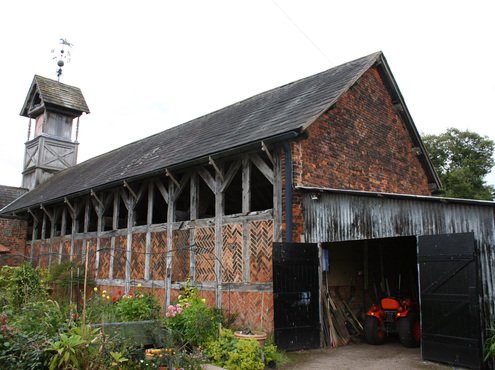

The borders demand a huge amount of staking to maintain their vertical prominence. Straight iron stakes are first heated then bent before use. Wood, cane, string and plastic items are used as well, depending on the application.
"Staking pays for itself in labour-saving," Gordon explains, "as we don't have to keep manually maintaining upright stems if bad weather strikes, as rain and wind can swamp the borders."
Further along the border, he points to a crop of rather underwhelming small pinkish blooms. "That's rare Diascia, native to South Africa. Carol Kline mentioned it when she presented from Chelsea a few years before." Then, with a wry smile, he adds; "we had it a bit before that."
Then there's Salvia 'Amistad', flowering May to November. TV gardener and presenter Sarah Raven says of it; "if I was only allowed to take one plant to a desert island, this would be in the running."
After our time marvelling at the herbaceous borders is done, we wander past the ornately carved stone alcove at their head, then happen on a tennis court, sand-filled synthetic surface and ready for play with net in place. "The family plays regularly. The court needs a little upkeep, but not much."
Then we move through to the shrub rose garden, turn a corner and spot the dinky Victorian Tea cottage, a charming location to take refreshments in days gone by.
Lined with viola occulta, this area features foxgloves and hollyhocks. "We add mulches on the surface and let Mother Nature do the rest," says Gordon a little distractedly as we picture him backdropped by the yellow array. The largely clay-based soil suits roses nicely, although the ground can become a tad "claggy" in winter.
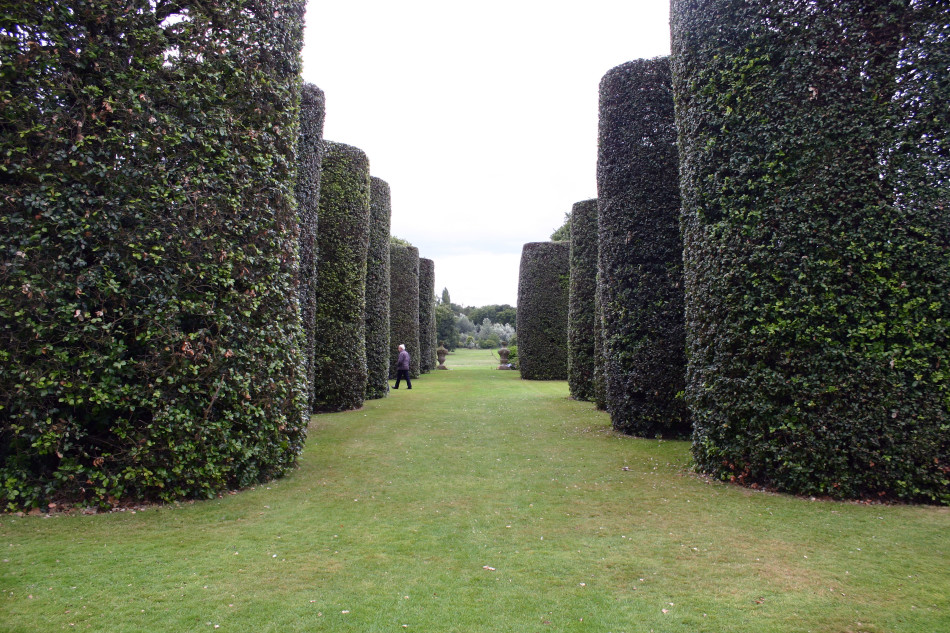
And so to the magnificent ilex avenue - the 'tin cans' - planted in the 1840s and shaped as cones until WWI, when staff shortages as men went to war forced a rethink and topiary was the casualty.
"Afterwards, they couldn't be pruned to their original shapes and the cylinders you see today were born," Gordon explains. The team have all been trained to build the 8m high scaffold required to trim each of the fourteen living structures - usually at the end of June.
"Health and safety dictates that it's erected and dismantled every day because we are personally liable if someone climbs up it and falls off. This takes two of the team two weeks and two days to complete using the hedgecutters - our battery-driven hedgecutter avoided one of them from using electric cable."
In the fish garden nearby - now free of fish because Gordon believes herons made off with the stock - strikingly geometrical beds are planted up.
Surrounding this is the alpine garden, which Gordon mapped out seven years ago, then planted up over the next two or three years. "I stripped out old topsoil and added eight tonnes more, with a tonne each of sand and horti grit."
Chris Beardshaw is a big fan, as is Roy Lancaster. Chris loves herbs, as I do. They filmed a clip for the Great British Garden Revival in the herbaceous border and Tim Wonnacott of BBC TV's Antiques Road Trip has visited us
Name-dropping comes easy in a garden with so high a pedigree as Arley Hall. "Chris Beardshaw is a big fan," reveals Gordon, "as is Roy Lancaster. Chris loves herbs, as I do. They filmed a clip for the Great British Garden Revival in the herbaceous border and Tim Wonnacott of BBC TV's Antiques Road Trip has visited us." How about his own gardening hero? "Geoffrey Smith," is the response, without hint of hesitation.
Recent national surveys of bird populations have revealed mixed fortunes, but Gordon brings glad tidings. "The last couple of years has seen far more birds on the estate. The dawn chorus can be deafening, not only in the spring, but all year round."
"Rooks and carrion crows gather here, of course, but ravens too." Aren't they confined to the grounds of the Tower of London and far-flung coastal reaches? Apparently not. "They are recent visitors - the red kite too, and we have plentiful buzzards shooting through the trees." - one swooped across the access road as we left.
Swallows and House Martins swirl around the ancient buildings - notably the wooden Cruck Barn, built in 1470 and the recipient of a heritage award.
"They really enjoy themselves, ganging up together. Some have made nests in seeding trays I placed on the walls of the potting sheds."
The great spotted woodpecker is in evidence at times too, as is its more common 'green' cousin. "I once rescued one from the clutches of a sparrowhawk," Gordon tells me. Is that interfering with the natural order of things I muse, then decide; "good man."
At the other end of size scale, goldcrests, the UK's smallest bird, are seen at Arley Hall.
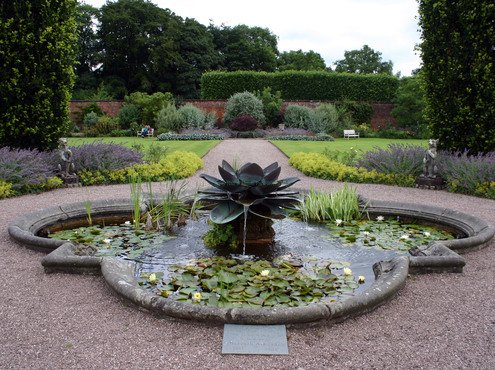
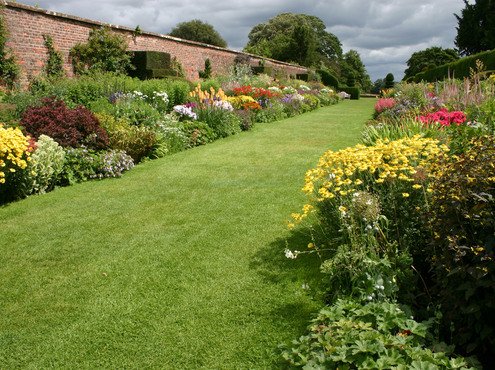
The three large ponds on the site also attract their fair share of wildlife diversity and are kept pretty much full thanks to the site's high water table.
"We use mains water on site, but try not to irrigate unless absolutely necessary as it is labour intensive," Gordon explains.
Rounding another centuries-old edifice - this one houses the visitor dining area - we nearly bump into a most distinctive character - an Arley Hall permanent resident - one of three willow ladies made specially for Disney's Evermoor, filmed here recently.
One of the lawns near the entrance bears the tell-tale marks of early season blooming. "Yes, that's the daffodil lawn, Gordon discloses. "We've recently cleared everything there following the Garden Festival at the end of June."
The maintenance budget depends on visitor numbers - and Gordon ensures he gets down and dirty to help swell them year on year. "It's comfortable for what we are doing here. In every job I've held, you usually see last year's budget rise by inflation."
The modest machinery fleet includes a Kubota tractor with trailers, a 12-year-old Iseki with bucket front and link box on the back and a new Iseki, which tackles the grove and woodland areas. An Iseki ride-on tends the garden lawns.
The AS Mower Slasher for rough-cutting meadow areas is a great favourite of Gordon's, as is the Billy Goat leaf vacuum, a godsend with so many deciduous trees, even considering just the immediate gardens.
With so much foliage to keep trim, hedgecutters wear out regularly. "I decided to switch from electric to battery units, bought one and now everybody is fighting to use it," says Gordon. "We need another one soon. They are so much more convenient than the electric versions, with all the cabling. The battery powering the plug-in option lasts a day, the backpack version three days or more."
You really can't run machinery without some noise, but we rarely, if ever, receive complaints about it. Although when filming's underway, the sound crew can be a little troublesome but, if they cannot see us, they are usually fine. The Who Let the Dogs Out game show was filmed whilst we were clipping the hedges and there was no problem.
Can noise prove intrusive for visitors? "You really can't run machinery without some noise, but we rarely, if ever, receive complaints about it. Although when filming's underway, the sound crew can be a little troublesome but, if they cannot see us, they are usually fine. The Who Let the Dogs Out game show was filmed whilst we were clipping the hedges and there was no problem."
Like his forebears, the present, 11th, Viscount Ashbrook and his wife take an active interest in the upkeep and evolution of the gardens. He created the grove and woodland area, which opened in 1983 and has a special interest and passion for rhododendrons, azaleas and hydrangeas, Gordon says, thanks in no small part to his head gardener's love of them.
Viscountess Ashbrook handles the herbaceous border. "The two of us develop a plan for summer and autumn, then spring and winter, including bedding plants. All three of us introduce plants as and when, as this is very much a large back garden - always growing and evolving, it's a dynamic thing."
Garden architecture and ornamental figures pepper the site, including four stone heraldic beasts, originally on the roof of the Hall, sited in the middle of the walled garden around the central pool with its dramatically sculptured copper foliage fountain.
Underneath the original Victorian carved stone bowl surround lies a commemorative plaque inscribed 'Elizabeth Ashbrook 1911 - 2002', marking her life.
It caused quite a stir at the time, I'm a Scottish nationalist and up for electrifying Hadrian's Wall
Arley Hall's celebrations for the Queen's Diamond Jubilee included each of the figures holding a flagpole flying a Union Jack. "It caused quite a stir at the time," says Gordon, who then reveals an allegiance that I should have suspected earlier. "I'm a Scottish nationalist," he grins, "and up for electrifying Hadrian's Wall." Sentiments strictly in jest, he stresses.
Also within the walled garden are beeches bearing the signs of thinning back. "Reducing the size of our beech trees to make them more manageable is on my priority list." Around them, the lawns stretch to the distant borders proliferating in front of the high perimeter brick wall.
"Lawn sand and organic fertiliser are applied to the grass, along with controlled droplet application twice a year and two-inch hollow tining every two or three years. We brought in a decompactor last winter and, this year, it was too cold to Verti-drain, so more weeds than usual have sprung up."

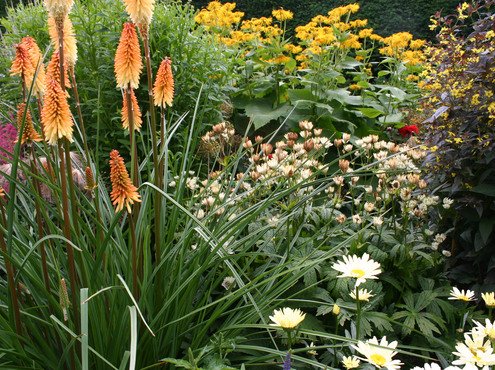
However, "despite the bad weather, we are celebrating one of the best years we've ever had. The plants have done really well."
Weather extremes aside, wind often can be a major issue for the team. "Care is needed as spray drifting across lawns can kill off the herbaceous borders."
Gordon replaced the wooden lawn edging along the walks four years ago, fitting stone ramps at one end of the lawns to allow mowers ready access to the grass surface.
The scale of the gardens means some seemingly everyday jobs are, in fact, large-scale, lengthy projects; the edging - a task completed over the winter closed-season - was far from an overnight one.
Last on our tour is the Vinery, a fine example of solid Victorian glass construction and cast iron engineering, with its clunky winching systems to open the top windows and huge pipes running along the glasshouse floor, once pulsing with hot water to create the conditions that the exotic species housed here thrive in.
The original heating is long deceased and Gordon has introduced modernity by converting the top window cranks to function automatically.
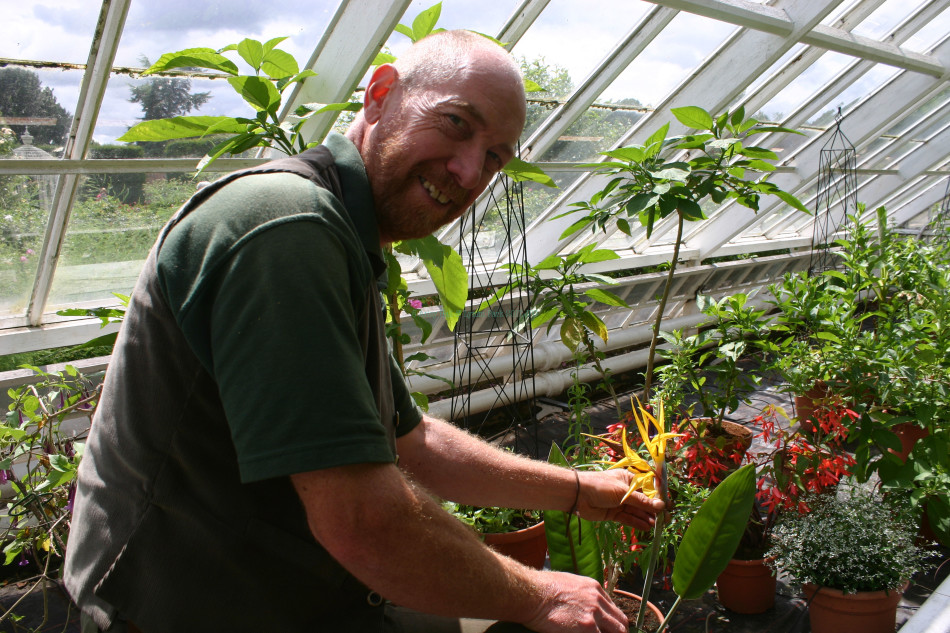
Erected in the 1800s, the building houses fig trees, currently replete with ripening fruit that are just as old. "Charles loves them," comments Gordon. "You have to rise early to get ahead of him." The three crops a year should prove enough to go round surely.
Within these walls, Gordon reveals one of his passionate pastimes - cultivating lilies. "I'm a horti nerd and wanted to introduce some interesting varieties when I started working here."
Climate in the Vinery can encourage unwanted wildlife. "Red spider is our biggest issue. We cannot eradicate it, but soak the wall with water as a deterrent. This year, the spider has proliferated due to the weather turning really hot really quickly then going cold then hot again.
"Thankfully, the whitefly is nothing like as bad as last year when we had clouds of them in the Vinery. Their excreta encourages sooty mould, which falls on the fruit - not a major problem as it is not a commercial crop. I have introduced the predatory wasp Encarsia Formosia [just 0.7mm long] as a well-tested solution for prevention and for low-infestation management, including aphids."
This garden of distinction has a timeless quality that imposes itself on you from the moment you enter the estate.
Amongst so many signature varieties, does Gordon have a favourite? "Plants are like children," he states coyly. "You are not supposed to have favourites."
All images: Jo Gornall/speed media one
